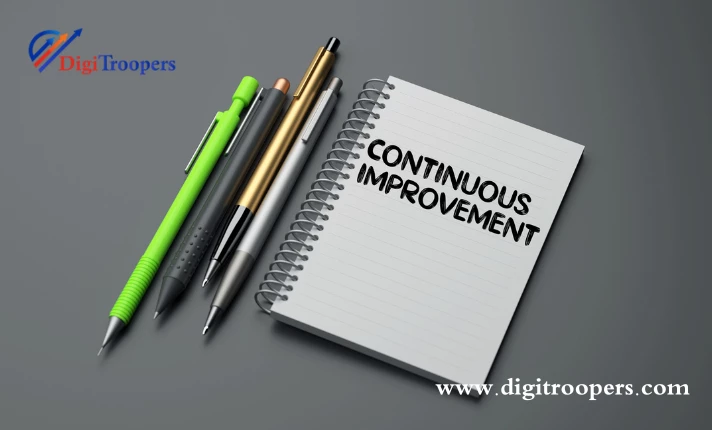A good website design is not only about looking good but also guiding your visitors from point A to point B as effortlessly as possible. If users find it hard to find the information they need, a page, or complete an action, they’ll simply leave. This is why building a smooth user journey is important to holding visitor attention and turning them into customers.
In this guide, we will discuss how to improve website user experience with by step breakdown on how you can optimize the navigation, improve the usability, and ensure smooth interactions throughout. If you’re a business owner or web designer, these UX design best practices will assist you in making a website that users love.
1. Understand Your User Journey
You need to know how users are using your site before optimizing anything. This entails mapping their journey from the point at which they arrive on your website until their last action, be it making a purchase, signing up, or getting in touch.
How to Do It:
- Analyze Behavior: Tools such as Google Analytics or Hotjar show how users flow through your site.
- Expand Your Reach: Find users who fit your targeted profile and approach them.
- Map out User Flows: Draw out the different paths users take to achieve their goals.
Mapping user journeys enables you to identify areas where website usability can be improved.
2. Simplify Website Navigation

Users must be able to locate what they need in a matter of seconds. Complex menus, poor link clarity, and an overabundance of options can frustrate visitors and force them to leave.
Website Navigation Tips:
- Always add five to seven main categories at most in the menu to make it simple.
- Provide a search bar for quick access to content.
- Use of hidden menus or too many dropdowns should be avoided.
A well-organized website enhances user flow so that visitors will find it easier to interact with your material.
3. Optimize Page Load Speed
Conversion is killed by slow websites. If a page takes forever to load, visitors will bounce before they even see what you have to offer.
How to Speed Up Your Website:
- Compress images to reduce file size.
- DO NOT use a lot of heavy plugins.
- Reduce unnecessary database calls by caching.
- Select a fast, reliable and trustworthy web hosting service.
Since website performance can affect user experience and search rankings, optimizing speed is critical.
4. Improve Readability and Content Structure
Users don’t read, they scan. They’ll skip right past you if they cannot get through your content because of clutter or information overload.
How to Enhance Readability:
- Use short paragraphs and bullet points.
- Break content into sections with clear headings.
- Choose a readable font size and contrast colours properly.
- Use images and visuals to support your text.
A well-structured page keeps visitors engaged and makes information easy to find, especially when supported by content marketing services.
5. Create Clear Calls-to-Action (CTAs)
Each page should have a clear call to action, such as signing up, downloading a resource, or making a purchase.
Best Practices for CTAs:
- When necessary, use action-based language (e.g., Get Started, Download Now).
- Use contrasting colors to make buttons stand out.
- Put CTAs where users expect to find them (above the fold, the end of articles, etc.).
A strong CTA clears any uncertainty and leads to conversions.
6. Ensure Mobile Responsiveness
Over half of internet traffic originates from smartphones. If your site is not optimized for smaller screens, you are losing out on customers.
How to Improve Mobile UX:
- Make sure you use a responsive website that works on all screen sizes.
- Make buttons large enough to tap easily.
- Make sure images and text are optimized for mobile reading.
- Check for any issues with your site using multiple devices.
Making sure the app design is mobile-friendly is a major part of optimizing the user journey and increasing engagement.
7. Minimize Distractions and Friction
At the end of the day, pop-ups, auto-playing videos, and messy layouts can just be too much for users and lead to a disruptive experience.
Ways to Reduce Distractions:
- Reduce the number of pop-ups and ensure they’re easy to close.
- On-screen animations or flashing elements make a website page difficult to read.
- People hate filling out forms, so keep them short and don’t ask people for information you really don’t need.
A site that is free of distractions helps your visitors concentrate and act.
8. Test and Continuously Improve

User experience is not a set-it-and-forget-it solution; it’s a continuous improvement journey. These regular tests and enhancements help keep your website easy to use.
How to Test UX Effectively:
- Test A/B to determine the most effective approach.
- Collect user feedback using surveys or live chat.
- Track metrics such as the bounce rate and conversion rates.
- Stay updated on UX trends and best practices.
Regularly improving your site keeps things running smoothly for users and leads to better results.
Final Thought
A smooth user experience is not a byproduct; it is intentional. By understanding user behaviour, clear navigation, speed optimization, and creating call to actions (CTAs) will improve your website usability and hence conversions.
Your website has to lead up to the point without any options, which leads to user frustration. Iterate, experiment, and above all, prioritize your users. Want help in getting your site optimized? Let’s chat in the comments!



